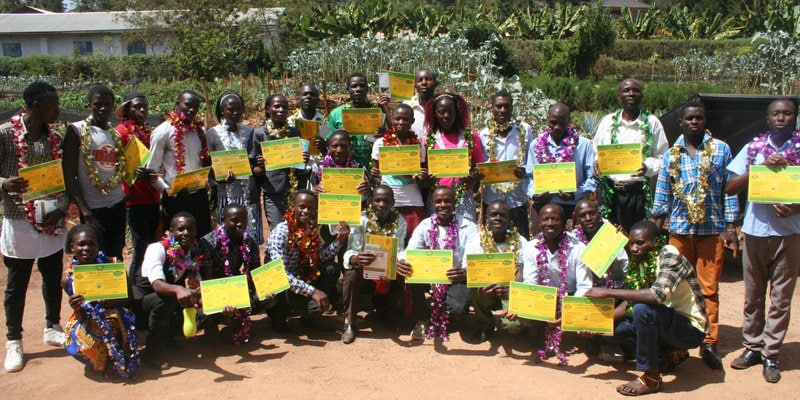On January 1, 2018, the first school of the new year started. 27 new students and 3 returning students moved into the Thrive teaching center eager to learn how to grow health. Each day involved morning lessons and afternoon hands-on activities. This blog post will take you through each day of the January 2018 growing health seminar. Make sure to scroll through all the photos to gain a better understanding of what we are doing.
Day 1: January 8, 2018
Each morning starts off with devotions to prepare students for the day. Afterwards, students take their seats and settle in for their morning lessons. On day 1 the lessons began with Thrive introductions and continued on with CROP and hygiene material. CROP is a daily habit that we teach the students and we encourage them to practice it daily. This acronym stands for:
C – Collect produce daily
R – Recycle organic material daily
O – Observe your garden daily
P – Plant something new daily
In the afternoon students discovered how to make fly traps and tippy taps. Students made the fly traps from empty bottles. These creations were placed in areas where lots of flies are present. Just as they are called, they are used to trap flies in order to prevent them from contaminating food. Fly traps contribute to preventing sickness and disease. The tippy tap in the photo below was made by the students. These are usually found near toilets and kitchens as they are used to wash hands properly for good hygiene. Hygiene is a big part of preventing diseases and is something that Thrive teaches a lot about.
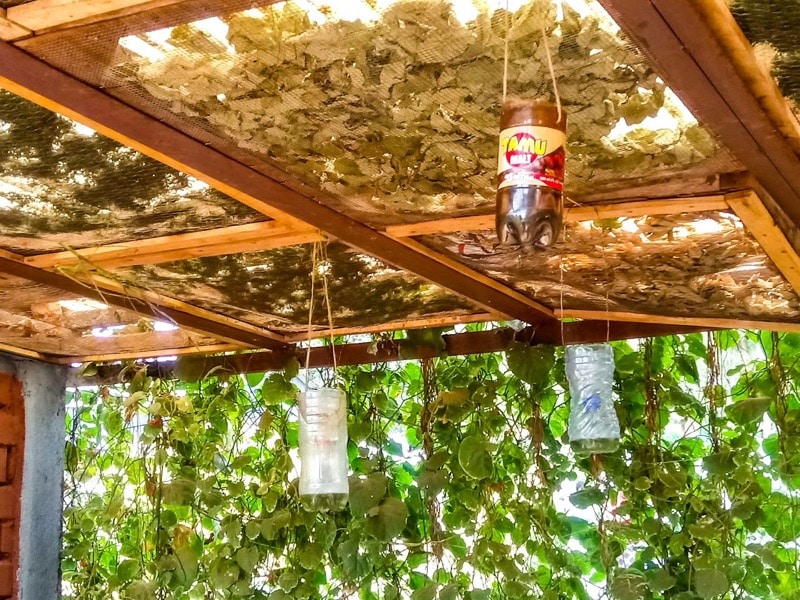
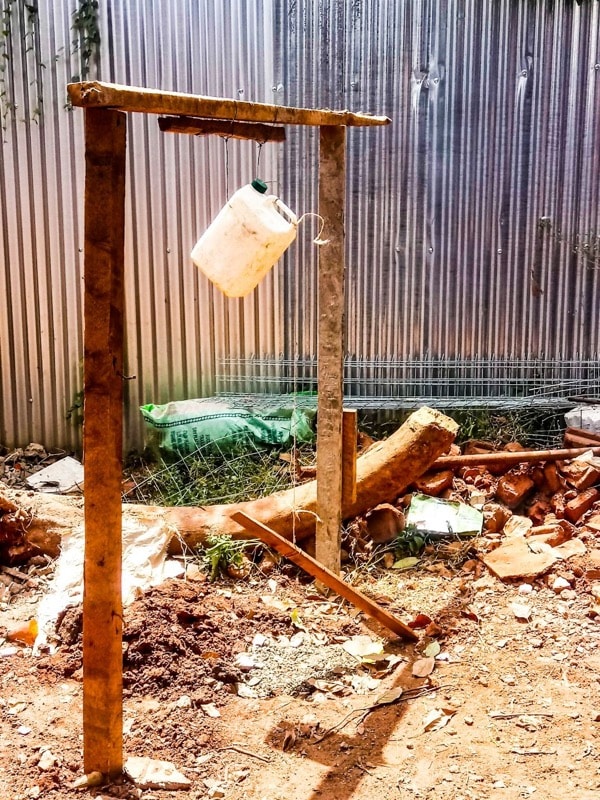
Day 2: January 9, 2018
Morning lessons included the miracle body and the fabulous 50. The miracle body lesson introduces the different systems of the human body. This allows students to understand how their body works and why it needs healthy food and exercise. The fabulous 50 lesson talks about the 50 plants that are higher nutrient and balanced, for example, sweet potatoes are twice the nutrient value of white potatoes.
During the afternoon activity students starting medicinal gardens. Students used locally available materials that could be recycled, like empty gallons and plastic bottles. Thrive not only promotes organic farming but also being environmentally friendly. Empty plastic bottles were used for planting medicinal plants such as Artemisia and hibiscus.
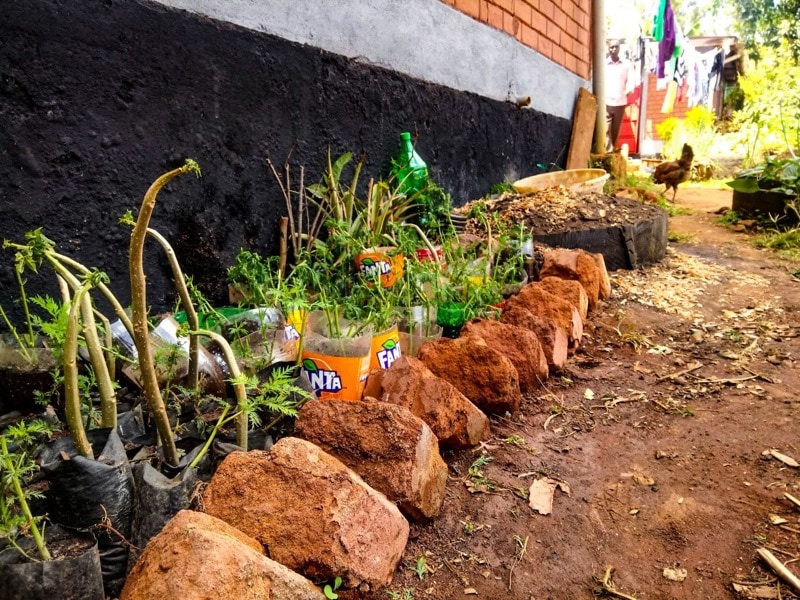
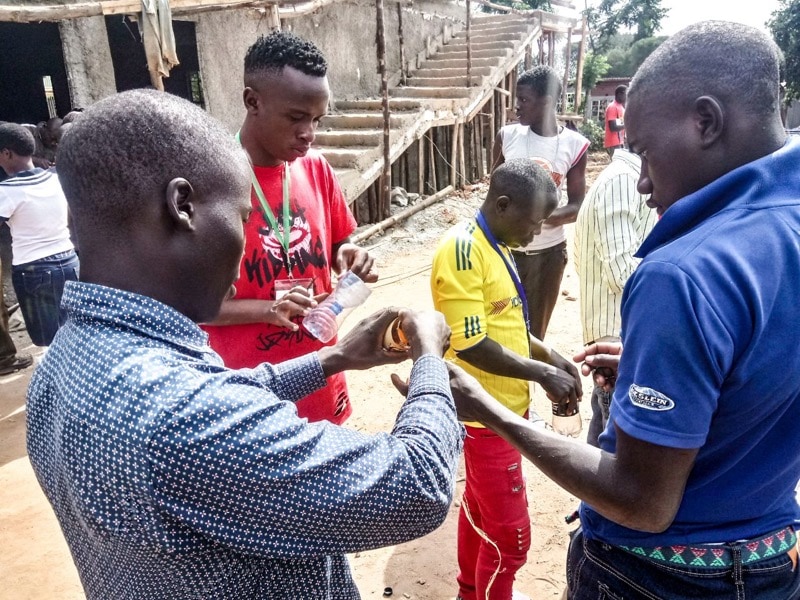
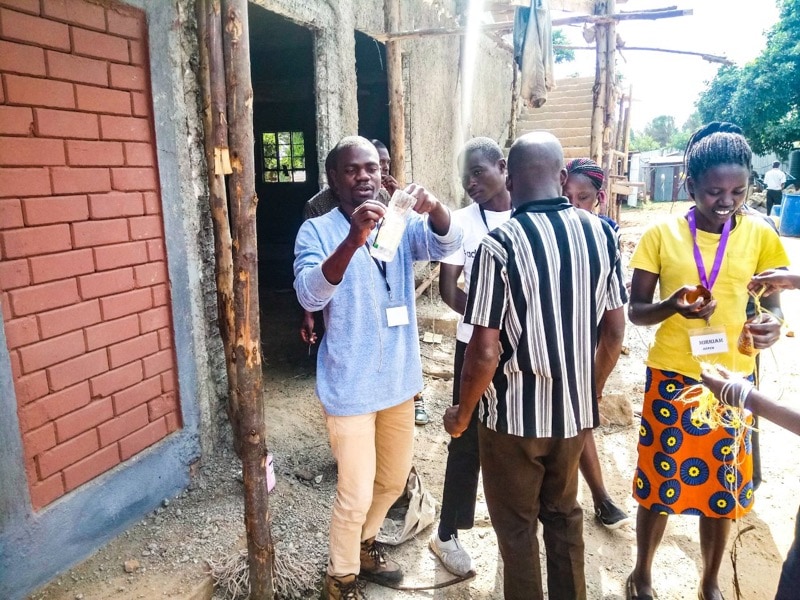
Day 3: January 10, 2018
Morning lessons included the introduction to natural medicine and foods that promote disease. The introduction to natural medicine discusses the advantages and disadvantages of using food as medicine while comparing it to modern medicine. The foods that promote disease lesson focuses on sugar, the biggest factor that contributes to promoting diseases and infections, especially cancer.
In the afternoon students were asked to collect dry materials for their gardens. Every student filled their own bag. Materials were collected from neighbourhoods and communities. This is such a great way to reuse materials that would have been thrown out or burned. Everything collected will be used as compost or used for mulching gardens.
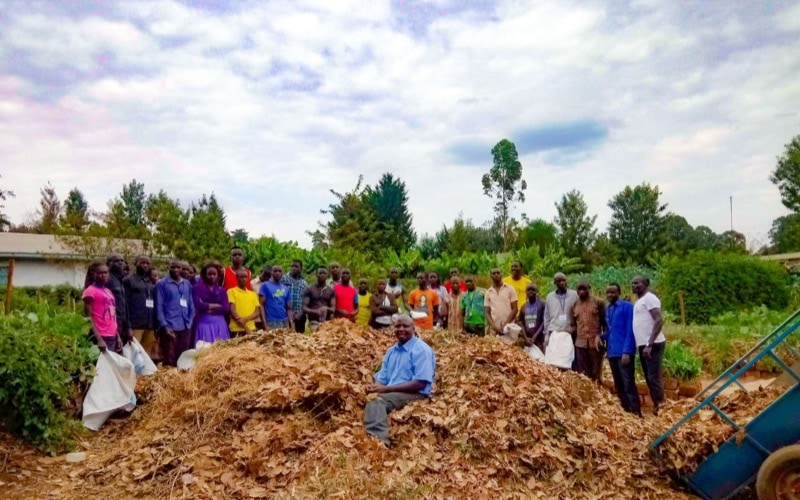
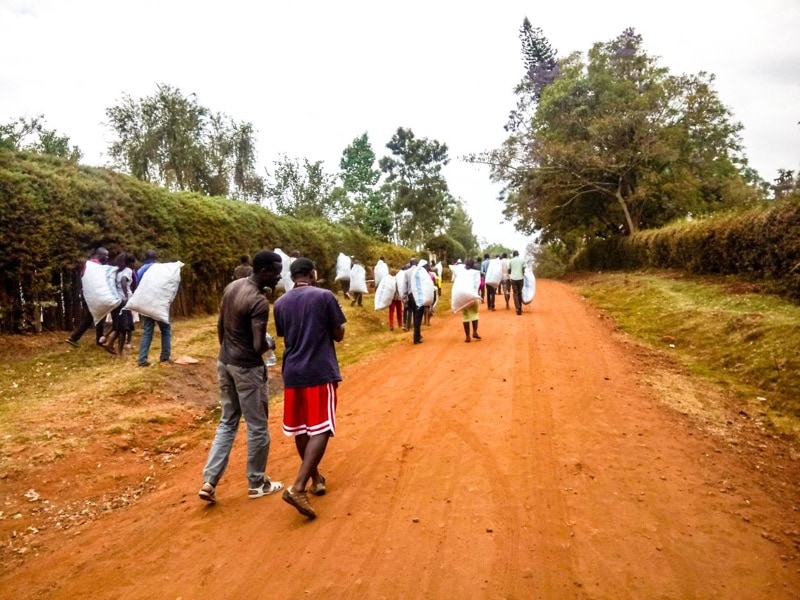
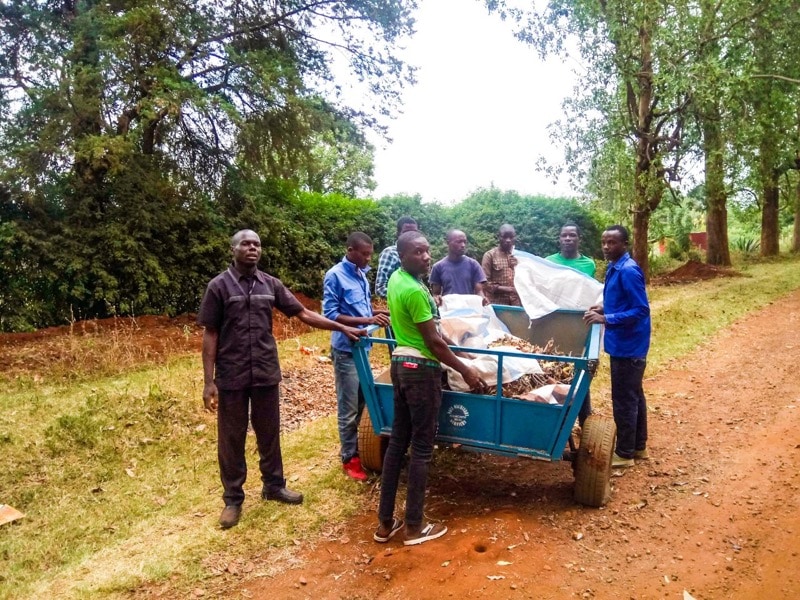
Day 4: January 11, 2018
Morning lessons involved anamed plants, the introduction to the soil food web and green leaf nutrition. In the anamed plants lesson, students learned about different plants that grow in Africa and their specific healing properties. Examples include aloe vera, goat weed and lion’s ear. The introduction to the soil food web lesson shows students how the soil is more than just dirt. It is a complex mix of minerals, nutrients and mirco-organisms that all work together to rebuild the soil. Green leaf nutrition reveals the similarity between humans and plants. We both have enemies and immune systems. Both humans and plants need nutrients to be healed. Students discovered that green leaf nutrition is our secret weapon against disease.
After lunch students were put into groups of 4 and given information cards. These cards contained details of various medicinal plants. Students needed to use this information to identify these plants in the gardens. They continued on to discuss each plant regarding its definition and medicinal uses.
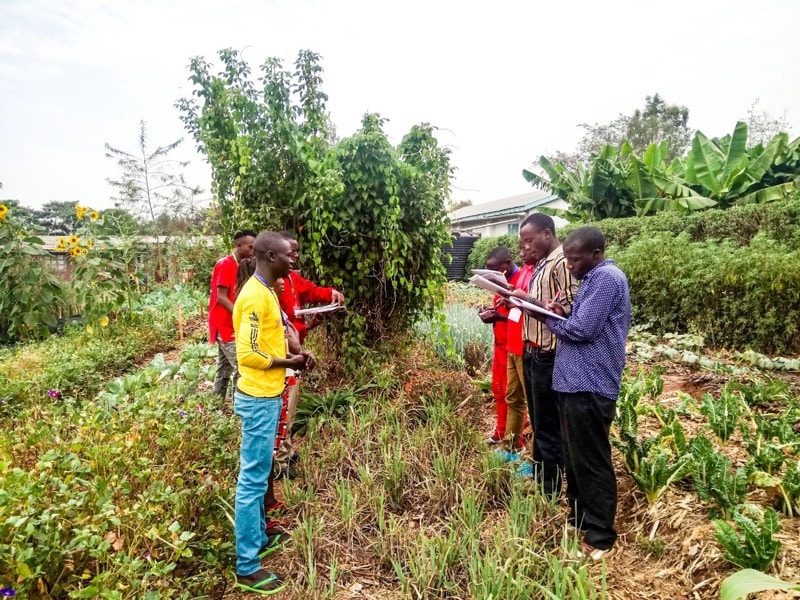
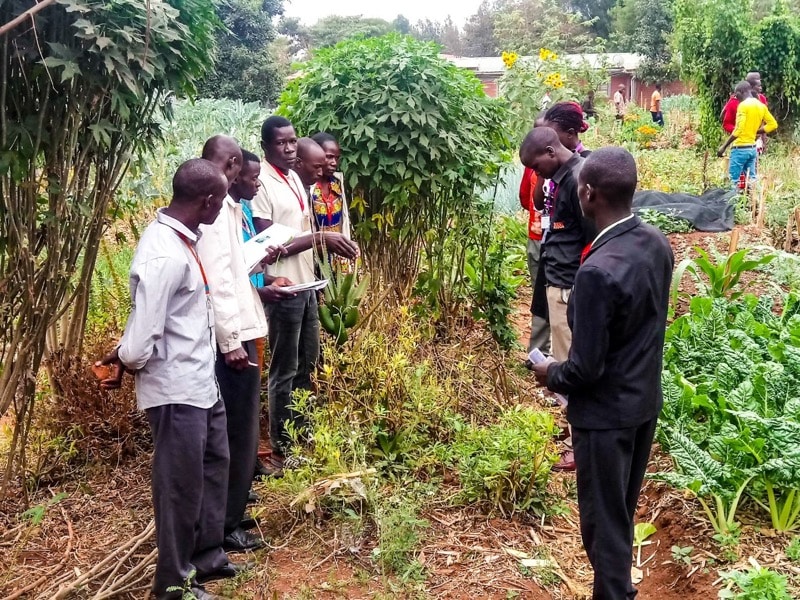
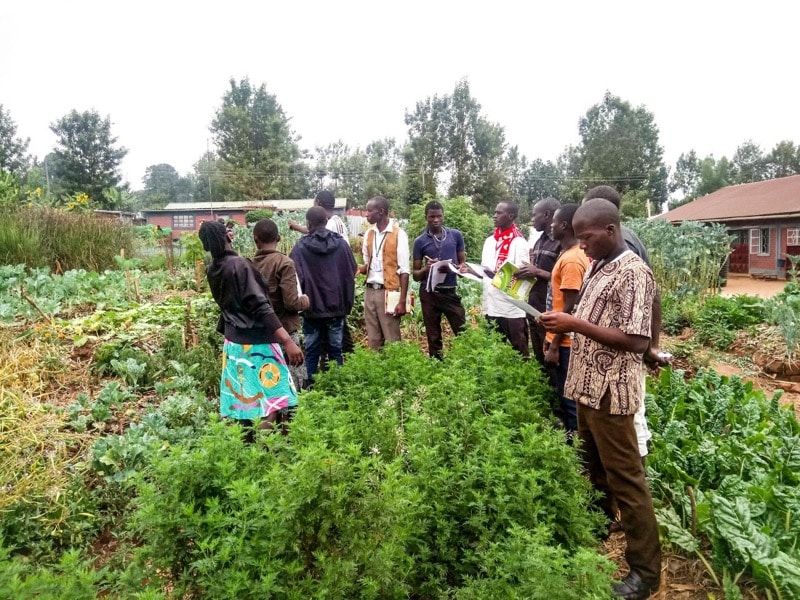
Day 5: January 12, 2018
Morning lessons included composting and soil texture. In both of these lessons students learned the benefits of composting and its effect on the soil structure. Making your own compost helps to build the soil long term and produces a higher quality of food.
In the afternoon students worked together to create a super soil bed. They needed to collect dried corn stalks and put them over the beds which was then covered with soil. The dried corn stalks help to store more water to make the bed soil more moisturized. This is very helpful during times of drought.
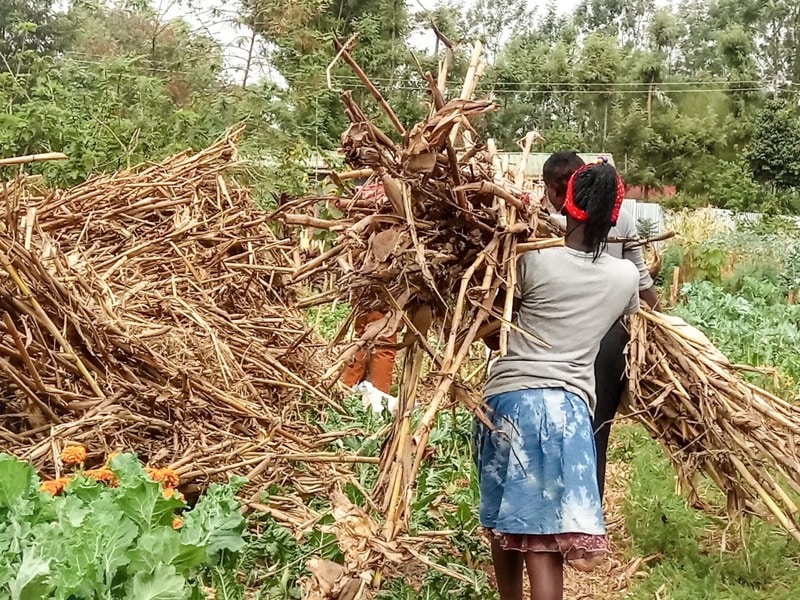
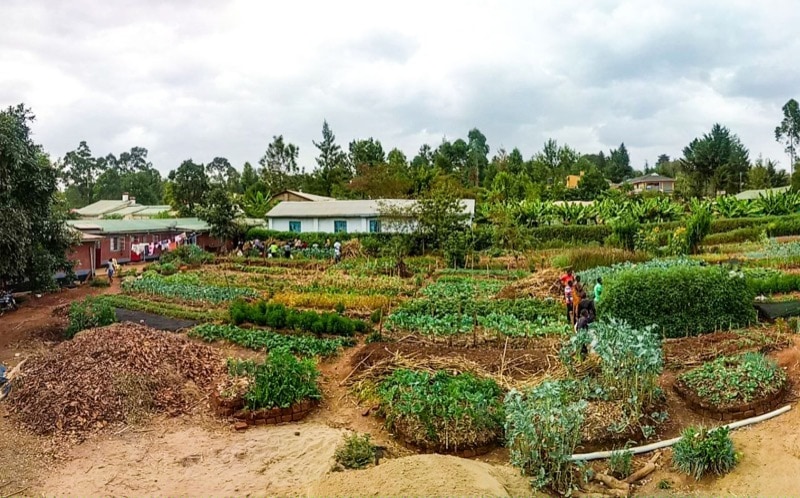
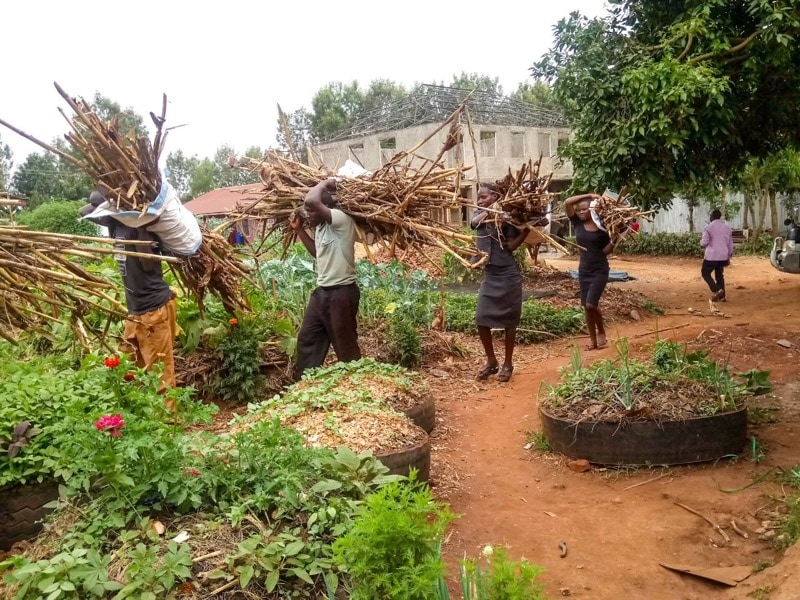
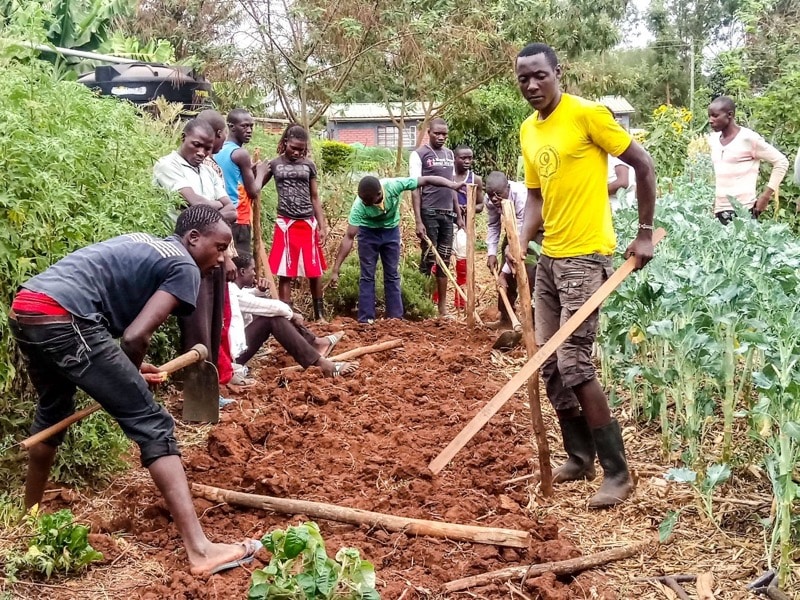
Day 6: January 15, 2018
Morning lessons focused on grow bio-intensive, moringa and a food preparation lesson teaching students how to make avocado salad. Students learned how modern farming techniques have destroyed the soil and how this can be reversed by adopting bio-intensive methods. Bio-intensive principles include double digging, composting, mulching, etc. During the moringa lesson students learned that moringa is the world’s most nutritious leaf and that it is very useful for the malnourished. Additionally, students discovered how they can incorporate this plant into their diets.
Today’s afternoon activity involved teaching the students how to create double dug garden beds. Each group of 7 had to create one garden bed. Students were happy to do this and caught on to the idea quickly. A much better learning experience than watching a video or just looking at pictures!
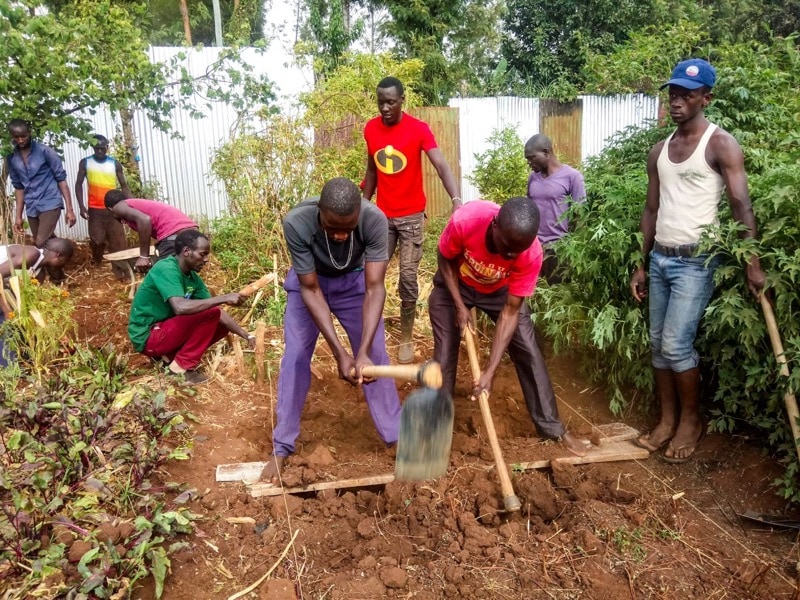
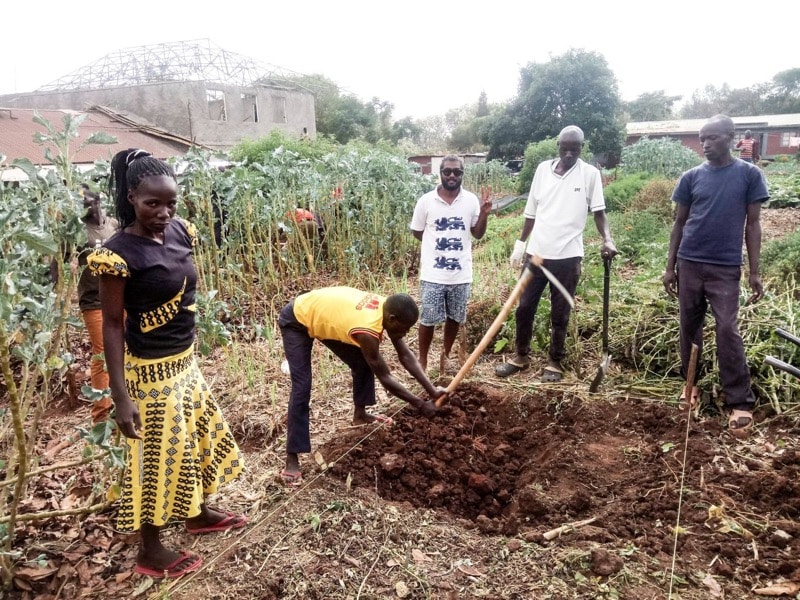
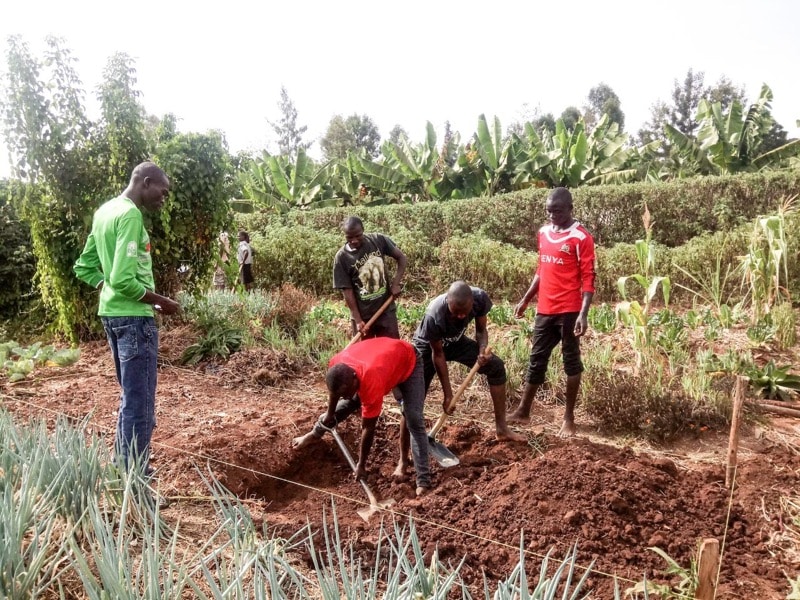
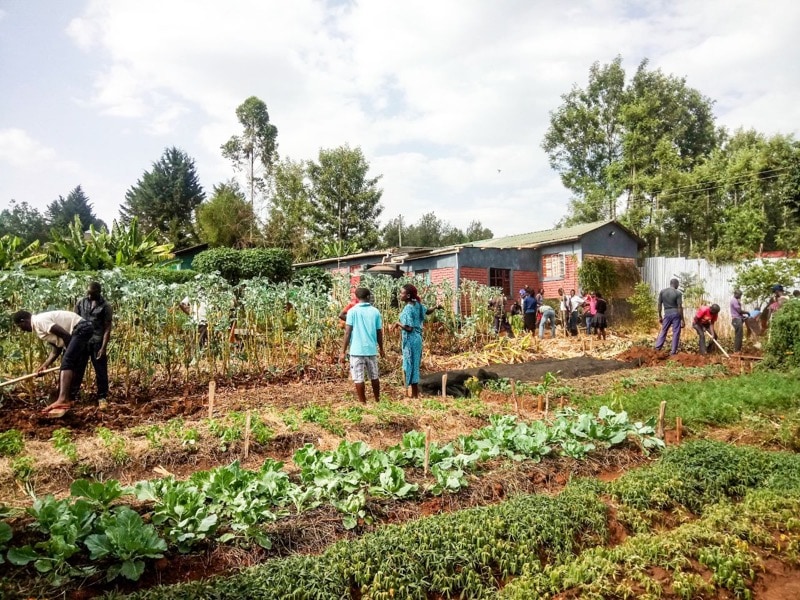
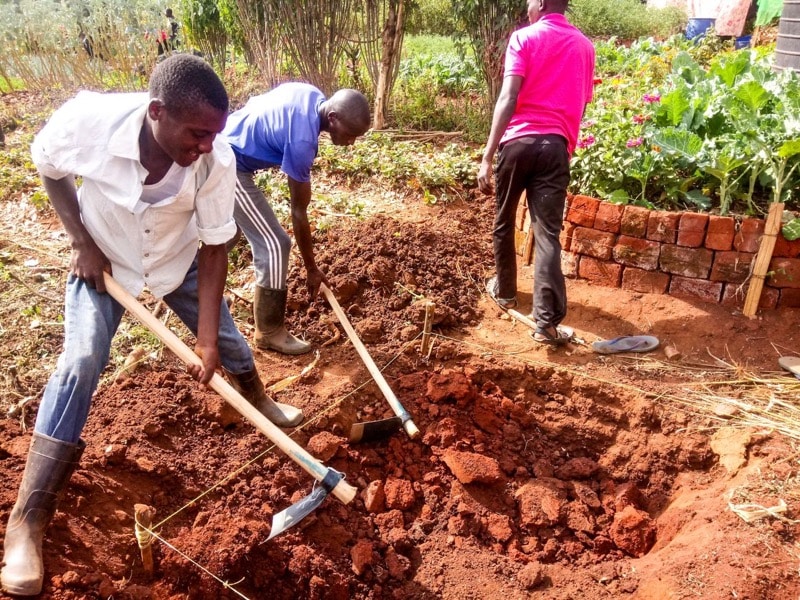
Day 7: January 16, 2018
The morning lessons focused on malaria, artemisia and compost toilets. Students learned about the causes, symptoms, treatment and prevention techniques of malaria. One of our favourite plants, artemisia, was introduced to them as the most powerful anti-malarial. We encourage them to take artemisia tea twice a day in order for them to be malaria-free! The compost toilet lesson explains how students can use their own human waste, something we call “liquid gold,” to help build the soil.
The afternoon was a bit more relaxing for the students as they learned how to make artemisia ointment. This ointment is good for the skin and can even cure skin diseases. Additionally, it is good for curing wounds. Students actively participated during the demonstration.
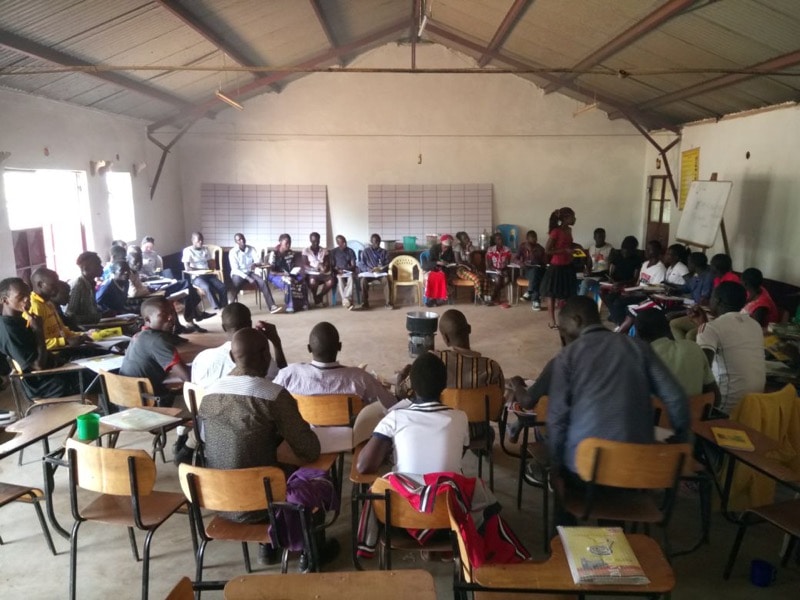
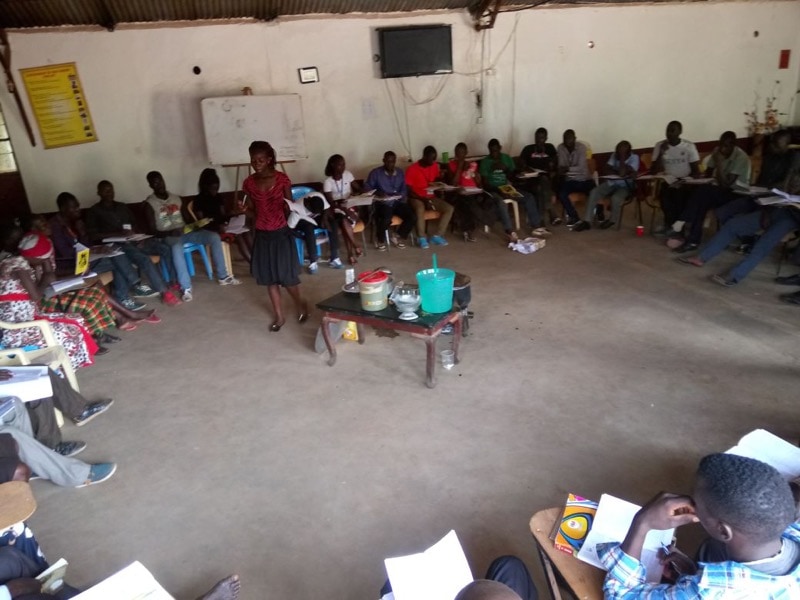
Day 8: January 17, 2018
The morning involved a lesson on pest and disease management which teaches students how to control pests in their gardens. These methods include planting marigolds to keeps pests away and planting a variety of flowers and herbs that will attract good insects. Students ended off the morning teaching session by learning more about the fabulous 50.
In the afternoon students focused on CROP (acronym explained above in Day 1). Some members collected dry materials, others mulched and the rest of the students loosened soil. These hands-on activities allow them to get a break from the classroom and to exercise what they have been learning.
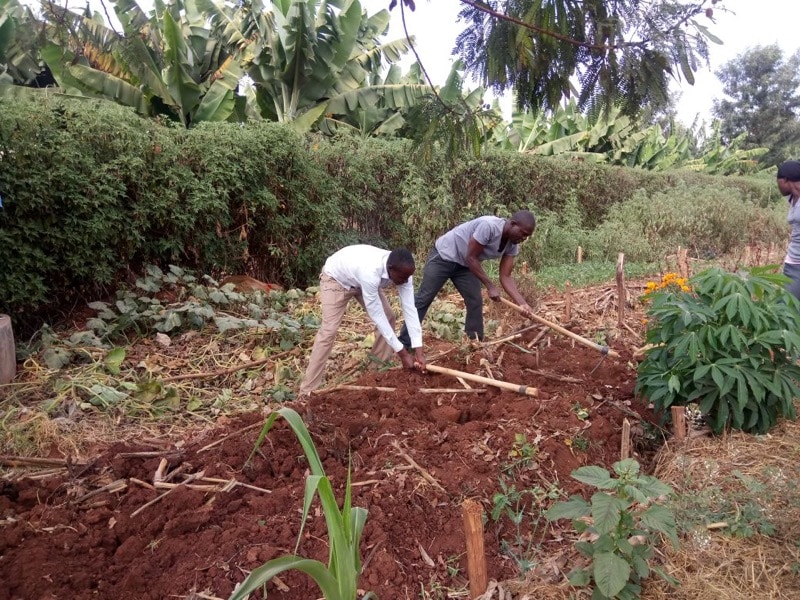
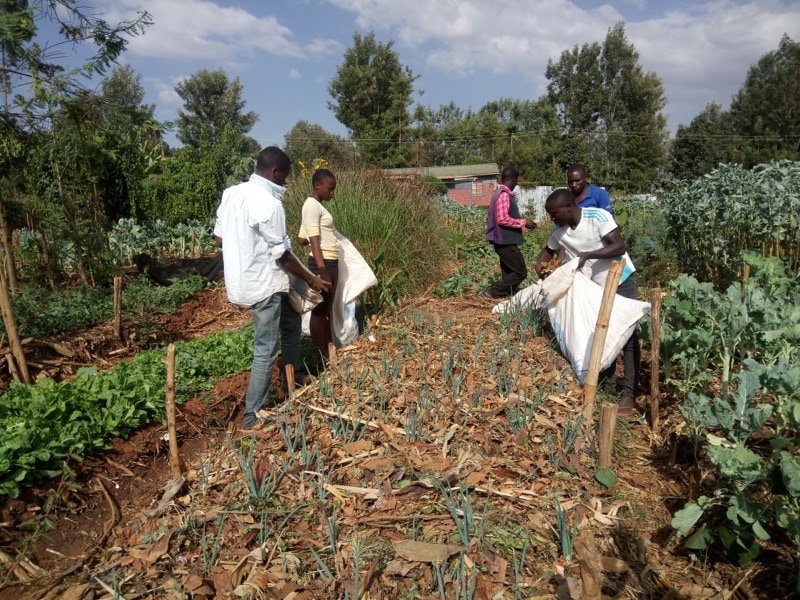
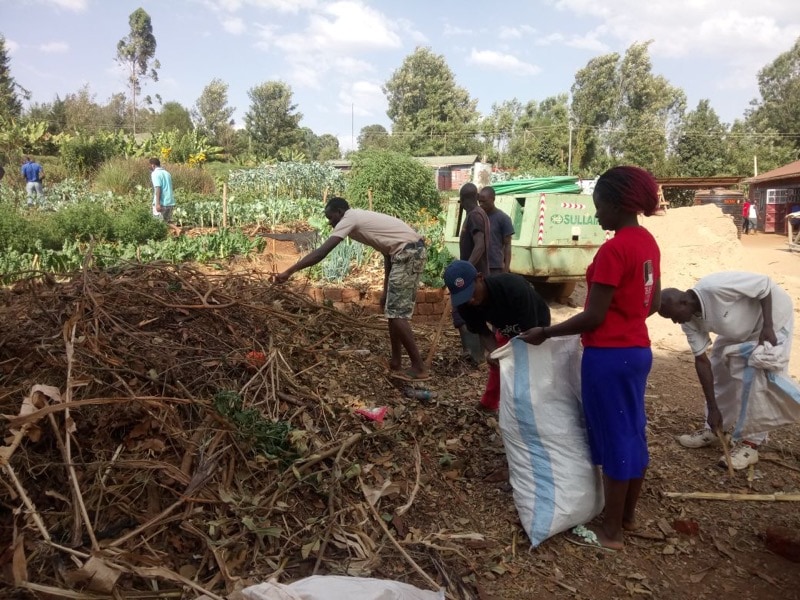
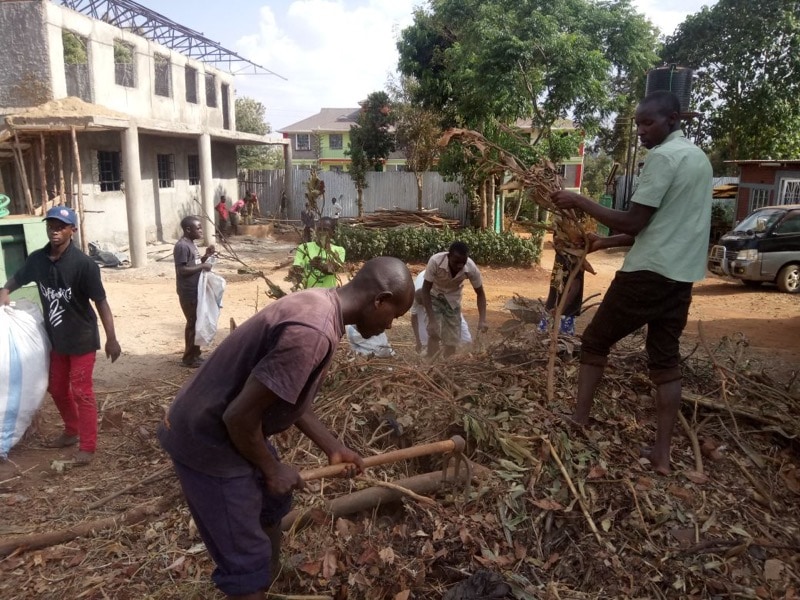
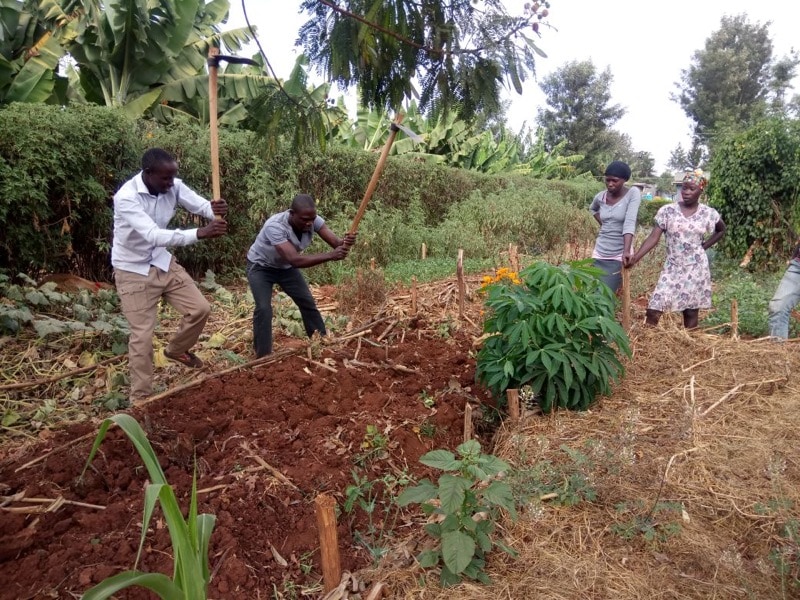
Day 9: January 18, 2018
The morning lessons included the immune system and companion planting. The immune system lesson explained the different layers of our human’s defense system. Students learned that it is really important to properly care for our bodies in order for our immune system to fight off diseases. Students then learned about working smart in their gardens by planting certain plants together. Companion planting helps to reduce pests and diseases, reduces the need of the plant and suppresses weeds.
During the afternoon students got their hands in the dirt as they focused on mulching and planting. First students would mulch and then move onto planting onion leaves. Students learned that there are two ways of planting – offset or linear methods.
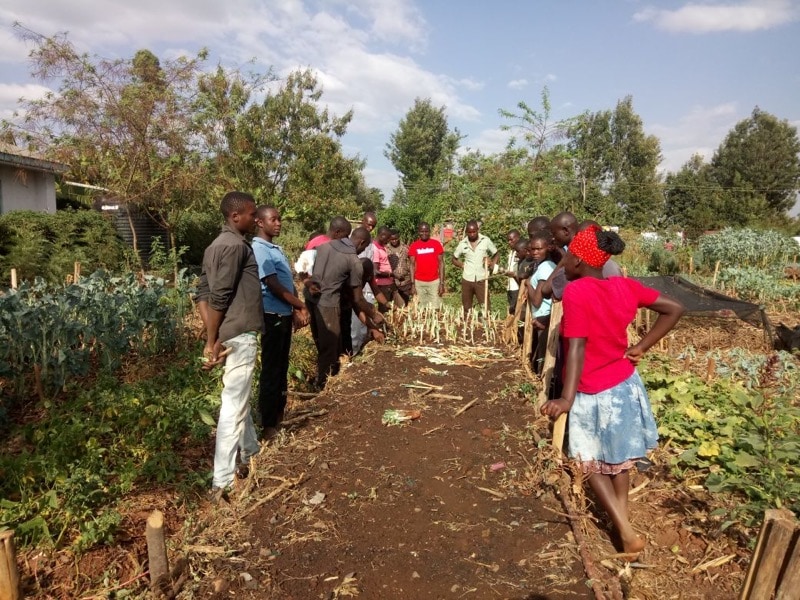
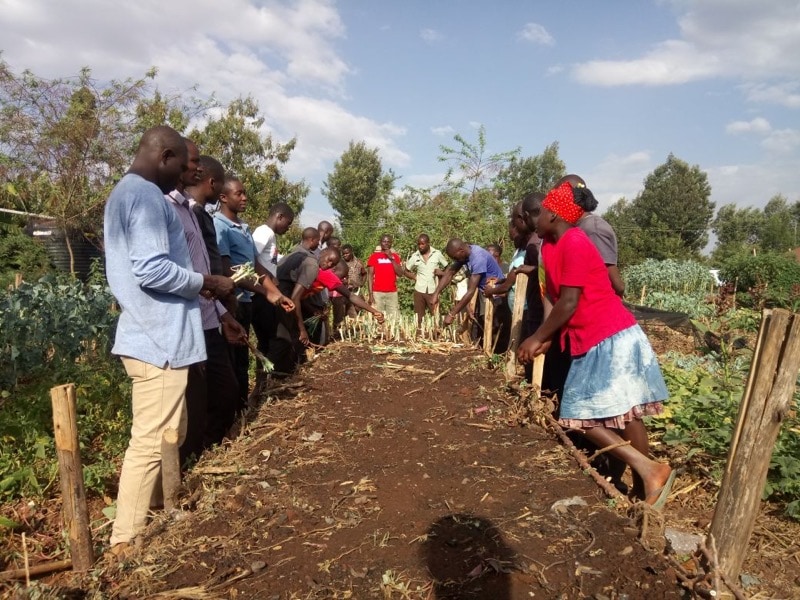
Day 10: January 19, 2018
Morning lessons focused on foods that prevent disease and vertical gardens. The famous Dr. Fuhrman’s Nutrient Density chart was introduced in the foods that prevent disease lesson. This chart illustrates why it is important to eat foods that have a high nutrient density score, therefore promoting a healthy body free of disease. Students then learned the practicality of using vertical gardens. A vertical garden is a creative way of growing food in areas that have limited space.
After filling their bellies during lunch, students learned how to create sack gardens – a type of vertical garden. These sack gardens are made from locally available materials like a net – again Thrive strives to also be environmentally friendly. These gardens are quite simple to make! They are best for houses with small pieces of land and most applicable in urban areas. They take up space by going upwards rather than outwards. Sack gardens are very practical when space is limited.
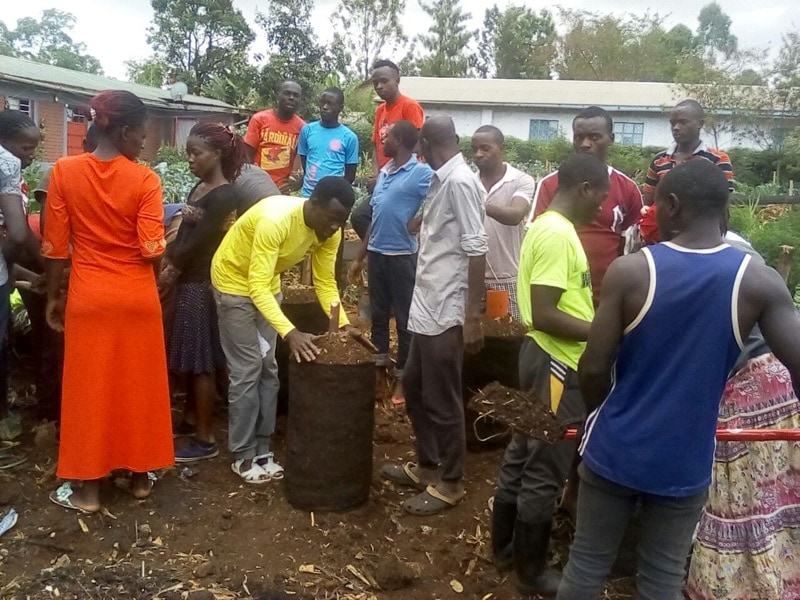
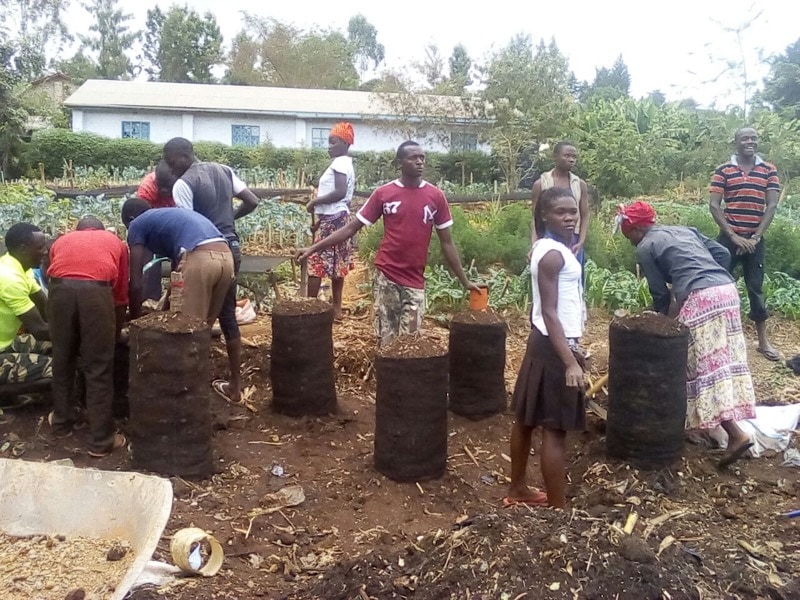
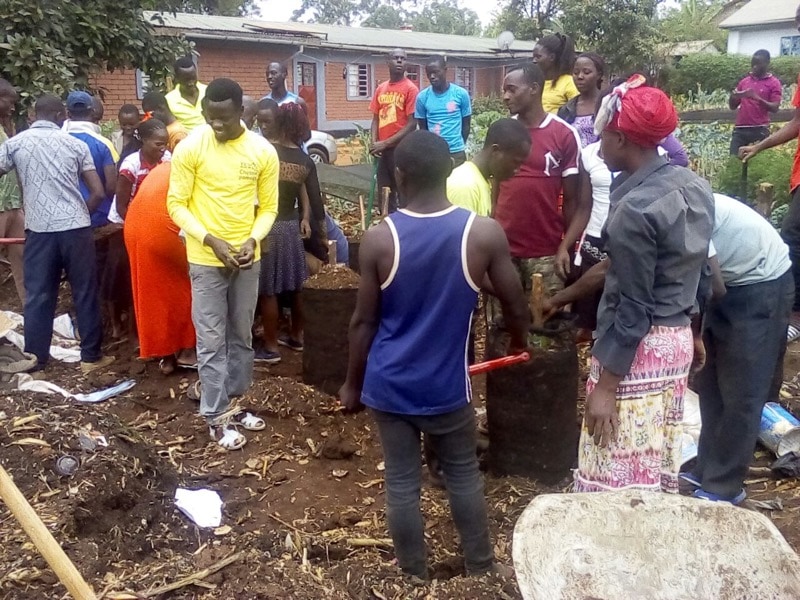
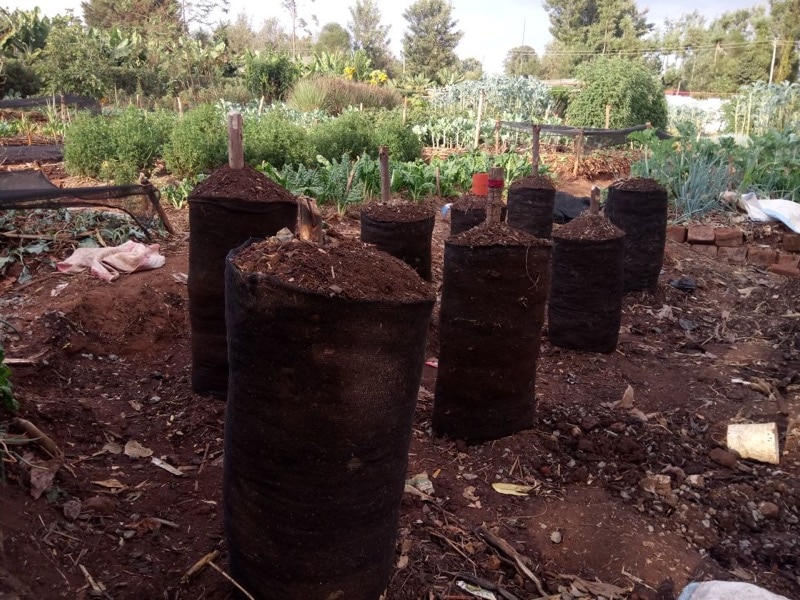
Day 11: January 22, 2018
The morning lessons started with miracle plants, which teaches about the different parts of the plant and shares all the interesting facts about plants that can be locally grown. For example, onions are an mild antibiotic, can soothe burns and bee stings. A lesson on worms taught students about the benefits of worms regarding our compost and soil. Students learned that worms are our best friends!
In groups of two, the students created compost tea during their afternoon activity. Compost tea is liquefied compost made from dry materials, manure and green leaves. These ingredients are put into water and left to ferment for a few days. When it has set, this compost tea is used to water the gardens, providing lots of nutrients to the growing plants.
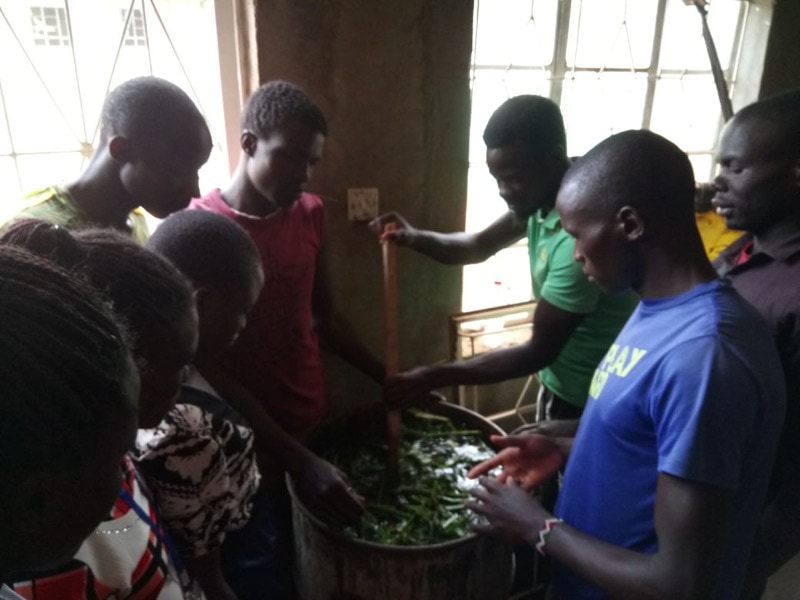
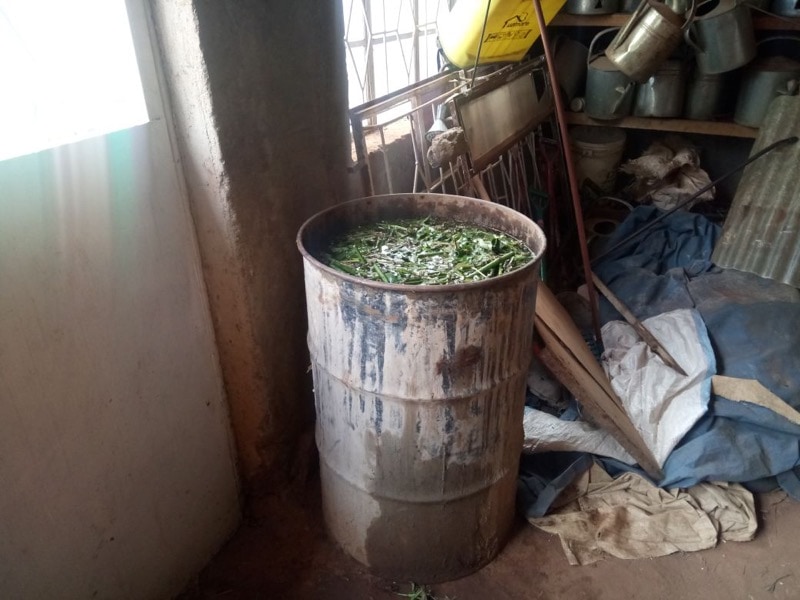
Day 12: January 23, 2018
Morning lessons involved bitters, perennials and living fences. The bitters lesson introduced students to different herbs that can be used as natural medicine. During the perennial lesson students discovered the difference between annuals and perennials and which plants they should include in their gardens. The final lesson on living fences involved students learning about a type of fence that is made from living plants. Living fences provide many things like protection from animals, shade for sensitive plants, and acts as a wind breaker.
In the afternoon, groups of 4 students explored our luscious green gardens as they worked together to identify plants. Catalogs were given to them to encourage learning of the plants’ uses and medicinal properties.
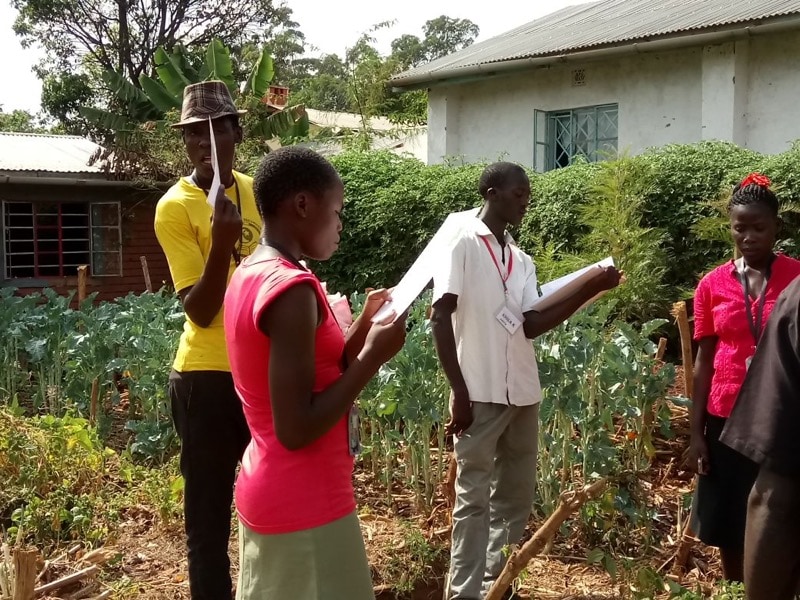
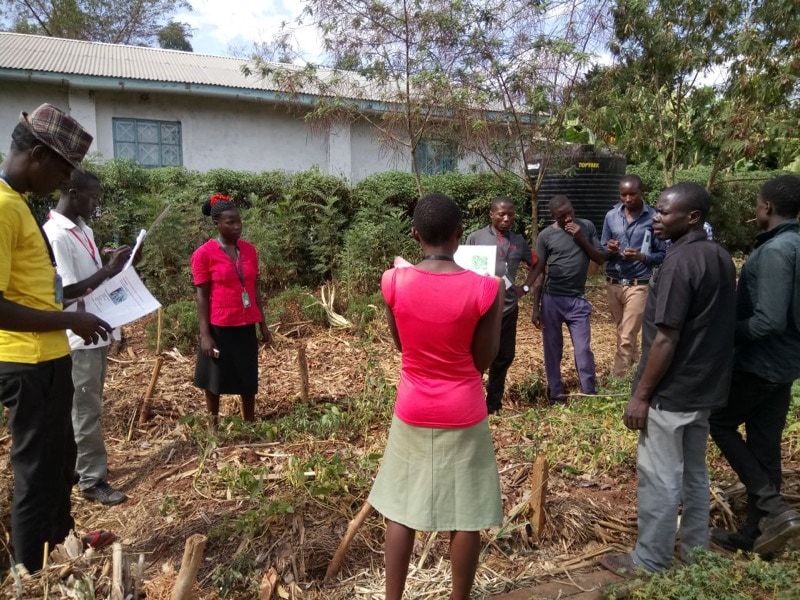
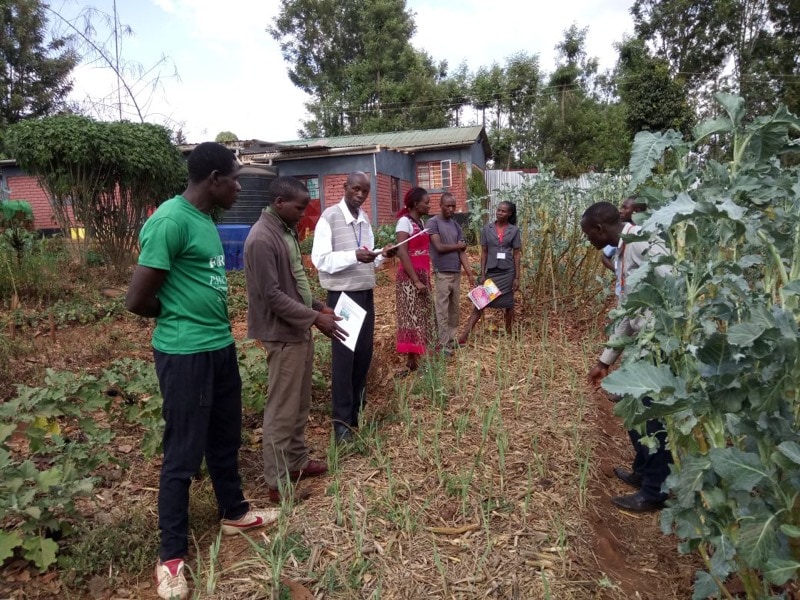
Day 13: January 24, 2018
This was a busy day! In the morning students first learned about plants in control and then about various skin conditions and how to treat them. Afterwards they participated in a food preparation class in which they prepared pumpkin soup for lunch. Yum!
The afternoon involved great hands on learning experience. Students learned how to plant onion leaves, kale, spinach and nightshades for their sack gardens.
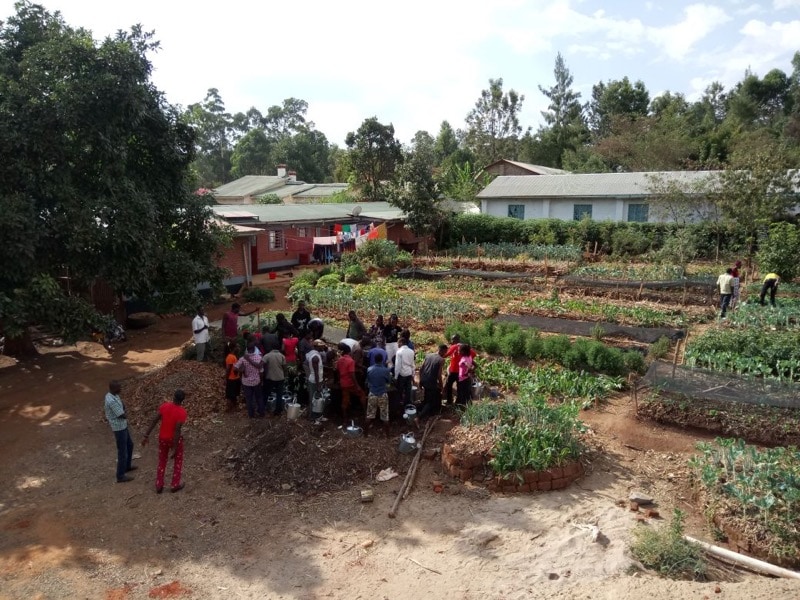
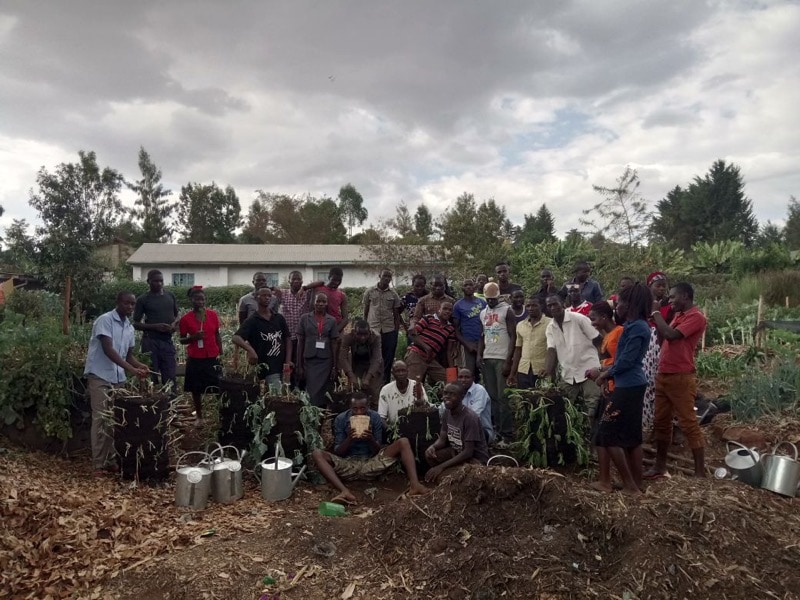
Day 14: January 25, 2018
In the morning students learned about keyhole gardens and rain water harvesting. Keyhole gardens are circular raised garden beds that have a wedge cut out for easy access. These garden beds have a compost basket in the center. When the compost is watered, the nutrients seep into the surrounding soil, nourishing the plants. Rain water harvesting includes different methods in which water can be collected and stored for future use. These methods encourage growth of plants all year round as there will always be enough water even in droughts.
After learning about keyhole gardens during the morning classroom session, students were put to the test to create their own. Students used locally available materials like old bricks to form the structure of the keyhole garden. These gardens are called keyhole gardens because their shape looks similar to that of an old keyhole.
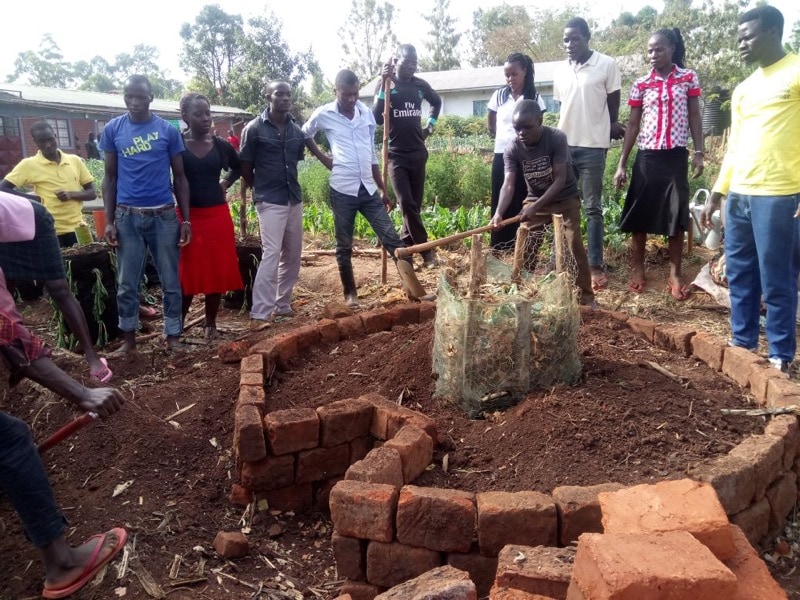
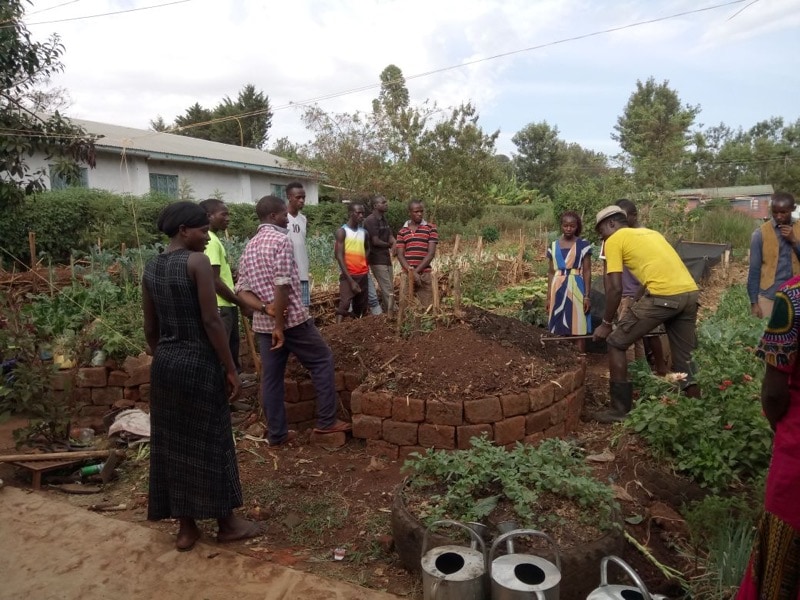
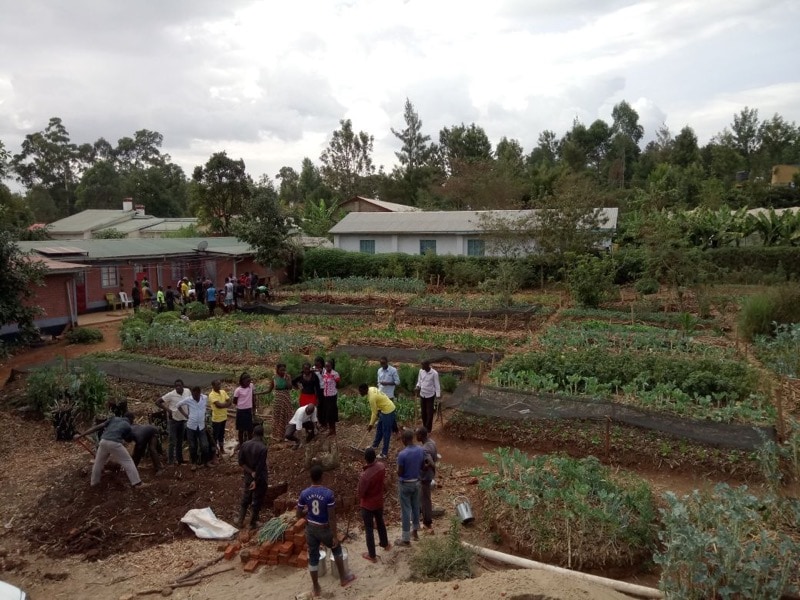
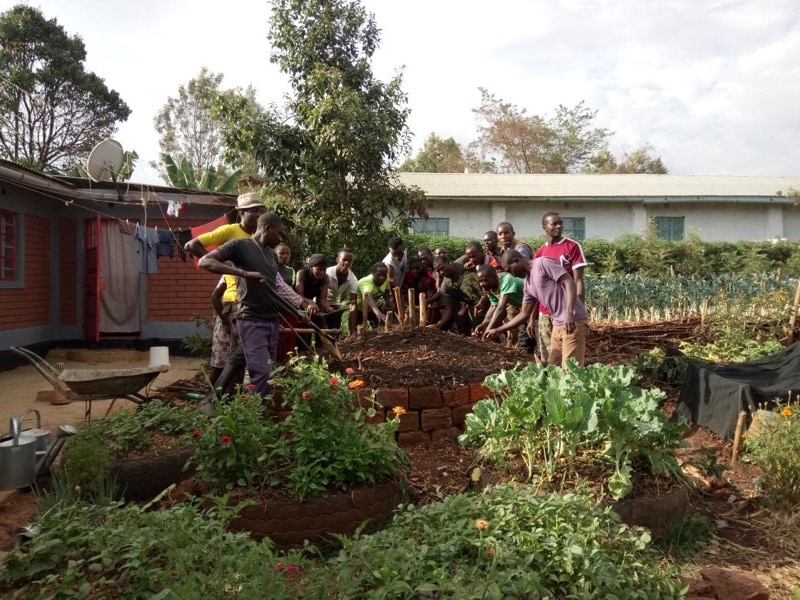
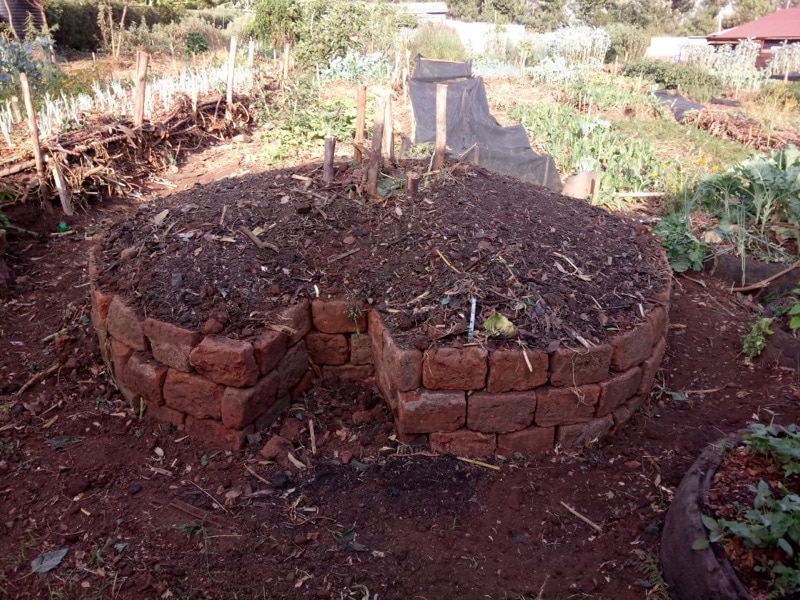
Day 15: January 26, 2018
In the morning students learned how to conduct a 5-day workshop. When students graduate from our one-month seminar they go back to their communities and conduct 5-day workshops to members that are interested. During these workshops, they teach the main principles and methods involved in bio-intensive gardening. As well, they lead hands-on activities that are used to start garden beds in the community.
Groups were on somewhat of a scavenger hunt during the afternoon activity as they explored Thrive’s gardens and worked together to identify various plants and discuss their medicinal benefits. Catalogs were provided to them to give them guidance. Preventing disease is a major part of what we teach at Thrive so it is important that we give students lots of time to discover and learn about each plant.
Day 16: January 29, 2018
The last week for the growing health seminar! In the morning students learned about working with Thrive and starting a group. These are two very important topics for students as they soon will go out to start their own community learning gardens.
As a big group, students and teachers worked together to build a new keyhole garden near our front gate. Everyone had a role, whether it was digging, gathering bricks, collecting materials for mulch or mixing compost with the soil.
Day 17: January 30, 2018
Morning lessons involved managing groups, principles of great teams, and servant leadership. Again, these lessons are very important as students need to be able to apply the main teaching points while they create groups in their communities. Additionally, students were taught the lesson about being healthy until 100. This lesson challenged students to think about how long they want to live and how they can extend their life through proper nutrition. With an extended life, so many more gardens can be planted!
Yesterday students gained more keyhole garden experience. Today, students continued to practice these skills as they worked together to rebuild multiple keyhole gardens at the training center.
Day 18: January 31, 2018
Morning lessons continued on with managing yourself, diabetes, and the 7 pillars of health. Africa has the highest rates of diabetes, it is an important topic for students to learn and understand. Causes, signs, symptoms, treatment, and prevention were taught during the diabetes lesson. The 7 pillars of health teaching identified the 7 pillars as water, oxygen, exercise, living food, rest, detoxification and healthy relationships/spirituality – all things that we need in order to live a healthy life, free of disease.
Today is the first day of an activity we call individual prayer and vision. After some provided preparation time, each student presents what they will be doing with their communities after they graduate. As well, they share the vision that they now have after taking Thrive’s one-month seminar. Their vision can include how many garden projects they plan to start, different types of plants they want to grow, etc.
Day 19: February 1, 2018
During the morning session students focused on and continued to prepare their individual visions and prayer.
During the afternoon the individual prayer and vision presentations continued. It was great to see how much each student has changed and to see the motivation that they have going into the next step of our training. As well, during this time we often put pressure on them by asking lots of questions. This helps them to think things through fully and to be prepared for common obstacles that they may face.
Day 20: February 2, 2018
Graduation day is a big day for the students! The day starts off with devotions, dancing and singing. Once all guests have arrived the ceremony gets started. The celebration involves inspirational speakers, individual and group talent performances, the receiving of graduation certificates, the enjoyment of food, and of course CAKE!
We are very proud of all the 27 one-month students and the 3 two-year students that graduated. We are excited to see them go back to their homes and transform their communities by providing food and health security for all! As well, we can’t wait for the next group of new students to come in April for our next one-month Growing Health Seminar.
Asante.
